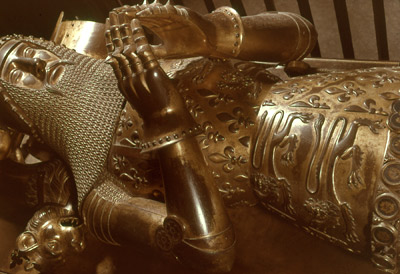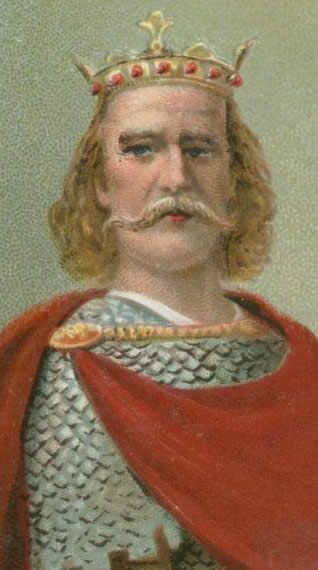Although Edward never became king – he died before his father, Edward III – he is remembered as a great medieval military hero, with notable victories against the French in the Hundred Years War.
Edward was born on 15 June 1330 at Woodstock in Oxfordshire, the eldest son of Edward III. He was created prince of Wales in 1343. He showed military brilliance at an early age, playing a key role in the defeat of the French army at the Battle of Crecy when he was only 16. In 1355, he was appointed his father’s lieutenant in Gascony and the following year led another significant victory against the French at Poitiers, taking the French king prisoner.
In 1362, Edward married Joan of Kent and was created prince of Aquitaine and Gascony by his father. Edward and his wife went to live in his new French domains. In 1367, Edward led an expedition to Spain, to restore the deposed King Pedro of Castile, and proved himself again with victory at the Battle of Najera in northern Castile. Edward returned to Aquitaine, where he made himself unpopular with the nobility by levying taxes to pay for his Spanish expedition. They rose in revolt against him and in 1370 Edward besieged the city of Limoges. When it fell, 3,000 of its inhabitants were massacred. A year later, Edward returned to England.
Edward died aged 45 on 8 June 1376, probably from an illness contracted in Spain, and was buried in great splendour in Canterbury Cathedral. His young son, Richard, succeeded Edward III a year later.
During his lifetime he was known as Edward of Woodstock. The title of Black Prince developed after his death and may refer to black armour that he wore.





![The First Phone Call [Video]](https://gaukantiques.com/wp-content/uploads/2013/03/alexander_graham_bell_500px.jpg)














